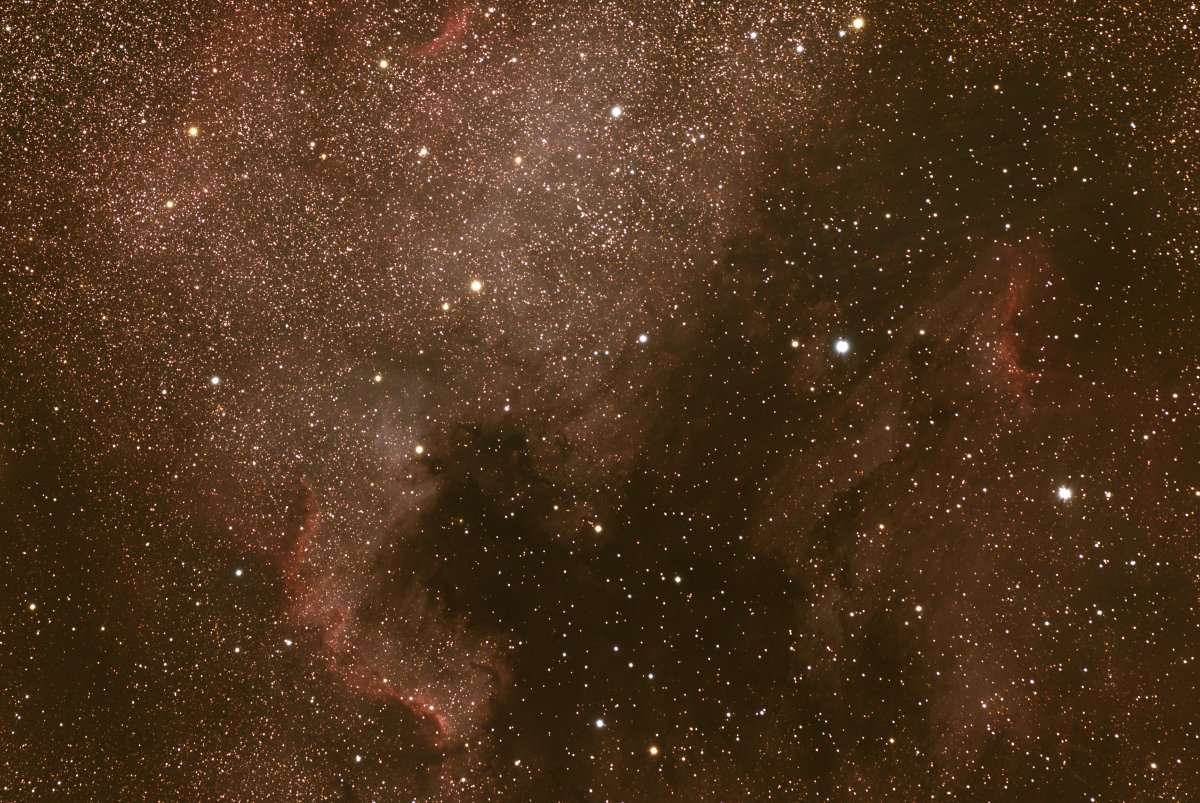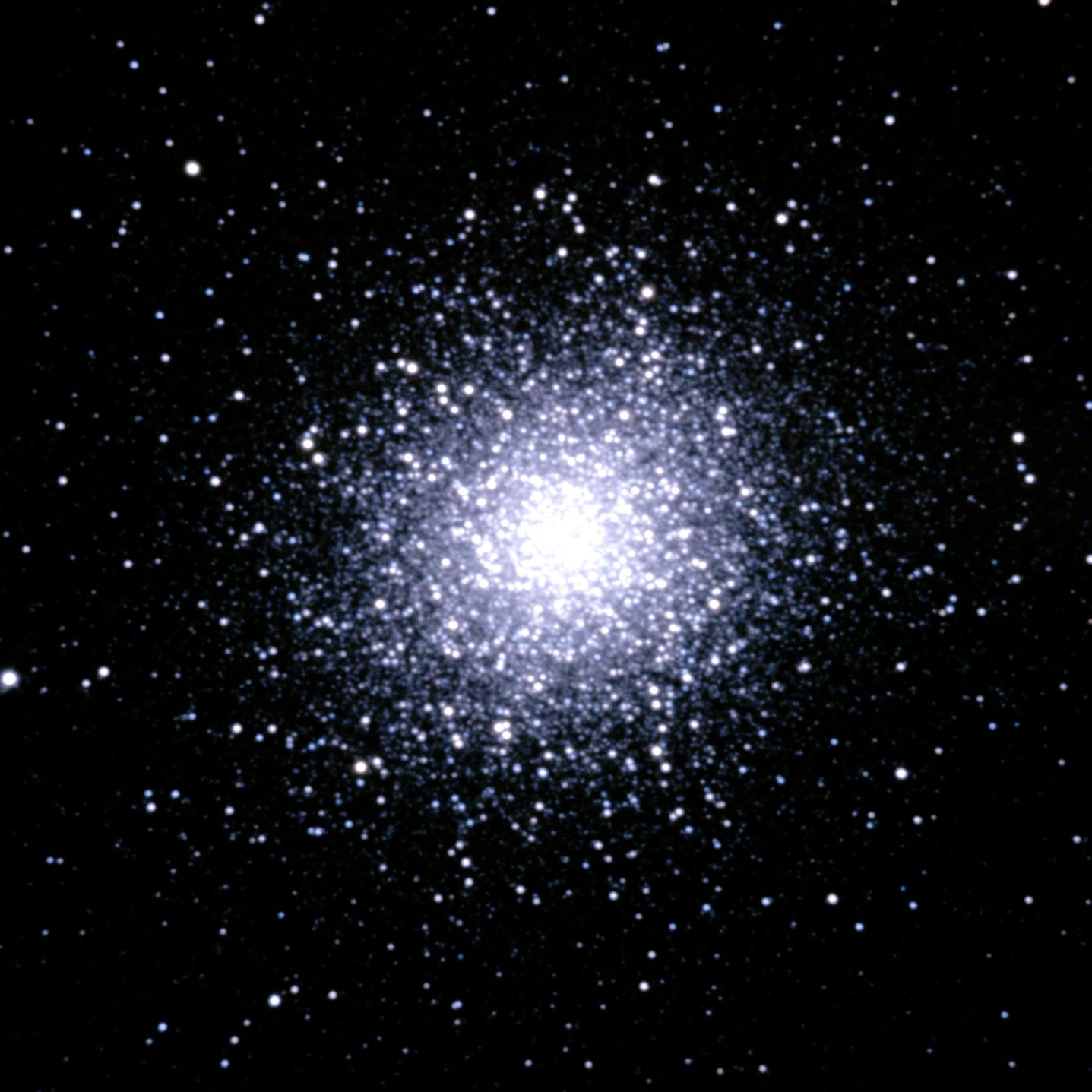 Next time you see the constellation of Orion, find the three stars forming the sword just beneath Orion’s belt. If you look carefully at the middle star in the sword, you may notice that it looks a little fuzzy. It looks smeared out because it is a nebula containing many stars that glow amidst vast regions of gas and dust. The bluish color comes from reflected light emitted from hot young stars that have recently formed in this “stellar nursery.” The reddish color is due to the red light that is emitted when ionized hydrogen nuclei (protons) recombine with electrons and form neutral hydrogen atoms.
Next time you see the constellation of Orion, find the three stars forming the sword just beneath Orion’s belt. If you look carefully at the middle star in the sword, you may notice that it looks a little fuzzy. It looks smeared out because it is a nebula containing many stars that glow amidst vast regions of gas and dust. The bluish color comes from reflected light emitted from hot young stars that have recently formed in this “stellar nursery.” The reddish color is due to the red light that is emitted when ionized hydrogen nuclei (protons) recombine with electrons and form neutral hydrogen atoms.
The large red and blue smear curving down toward the right is M42; the small pink arc connected to its upper left is M43. The bluish nebulae surrounding the bluish stars above a dark void is sometimes called the “Running Man.” Can you see his head, arms and legs?
I captured this photo on the evening of November 21 by combining 22 3-minute exposures with a Canon 6D camera, a Takahashi FSQ-106 telescope at f/5, autoguided.


